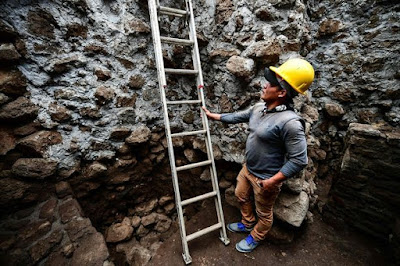7.1 magnitude earthquake in September last year in Southern Mexico exposes an undiscovered 900-year-old temple at the base of an ancient pyramid in Teopanzolco - an Aztec archaeological site in Cuernavaca, southern Mexico.
The discovery took ten months after the earthquake to unearth fully. The vibration damaged the base of the pyramid, called the Great Platform and exposed the previously-unknown temple.
Most of the remains are believed date back to the Mesoamerican Postclassic Period (900-1521 AD).
The Tlahuica people founded Teopanzolco and nearby Cuauhnahuac (Cuernavaca), before they were conquered in 1427 by Aztec emperor Moctezuma I.
Archaeologist Barbara Konieczna said:
Konieczna added:
The discovery took ten months after the earthquake to unearth fully. The vibration damaged the base of the pyramid, called the Great Platform and exposed the previously-unknown temple.
Most of the remains are believed date back to the Mesoamerican Postclassic Period (900-1521 AD).
The Tlahuica people founded Teopanzolco and nearby Cuauhnahuac (Cuernavaca), before they were conquered in 1427 by Aztec emperor Moctezuma I.
Archaeologist Barbara Konieczna said:
"We are finding walls of a temple that, according to its location and architectural characteristics, was built early in the Postclassic Period."It is also believed that this archaeological site is older than Tenayuca in the Valley of Mexico and the Great Pyramid of Tenochtitlan in capital Mexico City.
Konieczna added:
"What we found was a temple inside the large temple."For the time being, the site remains closed to the public and will hopefully reopen in October.



No comments:
Post a Comment